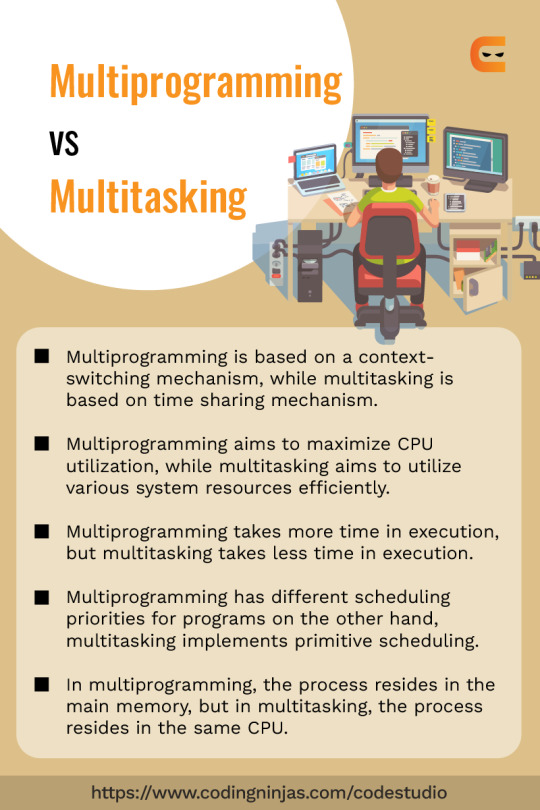#multiprogram
Explore tagged Tumblr posts
Text
Multigram / Multiprogram
[pt: multigram or multiprogram. end pt]
requested by @delightfulweepingwillows





A multigram is a term for an alter with various programs. This term is specific to programmed systems.
Monogram / Monoprogram
[pt: monogram or monoprogram. end pt]





A monogram is a term for an alter with a singular program. This term is specific to programmed systems.

#— coins#— programmed exclusive#anti endo#did system#endos dni#traumagenic system#actually traumagenic#term coining#system terms#complex dissociative disorder#did flag#osdd flag#system flags#alter flags#role flags#alter roles#system roles#tw programming#tw programming mention#tw ramcoa#tw ramcoa mention
28 notes
·
View notes
Note
The chatgpt shit is rampant in uni. A friend of mine is studying to be a highschool teacher and they were required to talk about the pros of generative AI use in the classroom, also including writing emails to parents using it.
I'm in compsci and I have had professors recommend sourcing code from it (ridiculous bc the stuff we are learning is heavily documented online for free) and I've had my peers use it to look up coding vocab.
Oh and that time a guy did his part of a program written w/ openmp when we were supposed to be using pthreads (different methods of multiprogramming) when we hadn't learned openmp at all.
A family member of mine works for a company that does government work and they were talking about sourcing code from generative AIs. It is BAD out there. :(
Luckily this is the first time I've seen it. But I've had people say shit to me like "oh, you should try using it to summarise your readings so you don't have to read them :)" IT'S A PATTERN RECOGNITION MACHINE! IT HAS NO READING COMPREHENSION!!!
10 notes
·
View notes
Note
also what os do you run on (because i think robots run on os's. right)
!!!!!!!!!! Thank you so so much for asking !!
I run on multiprogramming ; my CPU is always busy and I’m efficient ! No user interaction .]
2 notes
·
View notes
Text
Lab 4 Demand Paging CSCI UA.0202
In this lab you will simulate demand paging and see how the number of page faults depends on page size, program size, replacement algorithm, and job mix (job mix is defined below and includes locality and multiprogramming level). The idea is to have a driver generate memory references and then have a demand paging simulator (called pager below) decide if each reference causes a page fault. Assume…
0 notes
Text
Modern computers for general use have an operating system such as UNIX, Linux, Microsoft Windows, and Mac OS that run other application software or programs. An operating system (OS) manages all input and output functionalities within a computer system. The OS controls different users, networking, printing, and memory and file management by conveying data to the screen, printer, and other hardware devices connected to the computer (Laudon, & Laudon, 1997, p.34). Because of the difference in computer construction, the input, and output commands of each system varies. An OS consists of many compact programs controlled by the core or kernel. The kernel is the smallest unit of an operating system that allows users to access the application programs and other systems of the computer. Besides the kernel, operating systems have additional tools that display programs and manage user interface and utility programs for file management and configuration of the OS. Essentially, most operating systems use multiprogramming schemes that manage different jobs for maximum performance of the computer system. At any given time, the operating system kernel manages many processes including user processes such as applications and system processes, for instance the accounting process. Thus, an OS kernel is responsible for the management of multiple functions such as “inter-process communication, scheduling the processes within the CPU, creating, and deleting processes” (Milenkovic, 1987, p.157). Among the contemporary operating systems is the Linux operating system. The basis of this OS is UNIX standards. It comprises of three major systems of code, the kernel, the system libraries, and the system utilities. It runs most efficiently with PC hardware and is compatible with many computer systems. Linux operating system compared to other operating systems offers multiple choices; it is configurable, reliable, and supports networking and internet use. History of Linux Operating System An operating system (OS) entails a program that controls the hardware and software of a computer system through the control of the computer memory, management of the input and output devices connected to the computer; file management, processing of instructions and facilitating networking (Milenkovic, 1987, p.162). Early computers lacked operating systems for managing software and hardware. By the 1960s, pressured by the need to maximize CPU performance, commercial software vendors including UNIVAC and Control Data Corporation were able to provide tools such as batch processing systems for scheduling, allocating resources and execution of multiple jobs (Weizer, 1981, p.119). The batch systems involved developing ad hoc programs for each model (Silberschatz, Galvin, & Gagne, 2005, p.213). Several key concepts during the 1960s contributed to the development of the modern operating systems. The development of IBM System, that involved a single OS, the OS/360, intended to replace the batch system. Among the important features of OS/360 was its hard disk memory storage device, the DASD, which allowed easy file management. Another major development that contributed to the development of modern operating systems was the construct of time-sharing, which could let several users to have virtual access to the machine, since computer resources were expensive at that time. This led to the development of a time-sharing system, the Multics, which formed the basis for earlier operating systems particularly the UNIX (Ritchie, 1984, p.1577). The early microcomputers lacked the capacity for an elaborate operating system, but CP/M was one notable operating system designed for microcomputers that largely based on creating MS-DOS developed by IBM. In the 1980s, Apple Macintosh Computer developed Mac OS while Microsoft developed the Windows NT in 1999 forming the basis for its subsequent operating systems. Apple released the Mac OS X in 2001, an OS rebuilt on UNIX core. Due to the increasing complexity of the devices incorporated into computers, these devices use embedded OS. Modern OS have Command line interface (CLI) operating systems that operate using the keyboard functionalities for input. Other modern Operating systems use the mouse for input but this is dependent on the CPU system (Laudon, & Laudon, 1997, p.36) However, Linux and BSD operating systems can run all CPUs. From the 1990s, Microsoft Windows and UNIX operating systems such as Linux and Mac OS X have been the choice for personal computers. Linux is a modern operating system first designed in 1991 as a self-contained kernel by Linus Torvalds based on UNIX standards. Its development involved a collaboration of many developers from all over the world who communicated using the internet. The kernel is the major component of Linux operating system, which is compatible with existing UNIX software (Ritchie, 1984, p.1581). The Linux kernel developed in 1991 was compatible with most Intel processors but had limited support for embedded devices. Linux 1.0 version developed in 1994 had improved features including BSD-compatibility, improved file management systems, support for TCP and IP networking programming, and support for SCSI controllers that allowed quick access to the computer disk. In 1995, Linus developed Linux version 1.2 with features compatible with PC while version 2.0 came about in 1996 with two distinctive features; allowed support for microprocessors and support for much architecture such as Alpha port. It also had improved features such as advanced file and memory management and networking. The Linux networking tools bases on BSD code such as Free BSD and allows improved networking compared to earlier versions. The Components of Linux Operating system The basis of the design of Linux Operating system commonly used in servers and PC is UNIX standards. It intended to allow use of a computer system by multiple users, allow multitasking based on the earlier time-sharing configuration, and be portable. The design of UNIX systems has common distinctive concepts; devices that allow communication between multiple users, data storage involve plain text storing and hierarchical system for file management (Silberschatz, Galvin, & Gagne, 2005, p.192). As a result, the Linux file system follows the UNIX networking standards with an aim of improving efficiency and speed of the systems. Linux design is compliant with the SVR4 UNIX semantics and BSD codes and POSIX requirements. The four major components of Linux operating system include programs for system management, user utility programs, compilers, and user processes. The four components make up the system shared libraries that are core to Linux OS kernel. User Processes System management programs User Utility Programs Compilers Shared system Libraries Linux Operating System kernel Kernel modules All UNIX implementations are composed of three main systems of codes: the kernel, the shared system libraries, and the system utilities. Similarly, Linux, which bases on UNIX design principles, has the three code systems. The kernel provides the required operating system abstractions while the kernel code allows the user to access the computer hardware and software. This code together with the OS data structures occur at a single address within the OS. The system libraries on the other hand, provide standard functionalities that allow the interaction between the kernel and the operating system and are independent of the kernel code. The purpose of the system utilities is to perform particular tasks as per the requirements of the various user applications or programs. The kernel modules refer to the functionalities of the kernel code that can be loadable or unloadable independent of the other functionalities of the kernel. They enhance the implementation of a networking protocol, a file system, or any embedded device thus allowing the distribution of file systems or device drivers. The Linux kernel modules allow the setting up of a Linux system with minimal kernel or additional inbuilt device drivers. The Linux module support comprises of three main components: the driver registration, conflict resolution, and module process management, which allow loading of modules into the kernel. Module loading allows the management of the kernel code within the kernel memory and management of the symbols referenced by the kernel modules. The module requester is involved in the management of loading requested and confers with the kernel regarding the status of the loaded module, and unloads it if no longer needed. The driver registration functionality allows kernels to send information to the rest of the kernel regarding the availability of a particular driver. Normally, the kernel maintains registration tables of all available drivers and provides the options for adding or removing particular drivers. Registration tables kept by the kernel include file systems, binary formats, networking protocols and drivers for various devices. Conflict resolution is a mechanism that allows various drivers to possess a given hardware resources and protects one driver from using resources of another driver. Thus, the conflict resolution module allows fair access to hardware resources by all drivers, prevents new device drivers from affecting the existing drivers by ensuring fair access to hardware resources. In Linux operating system, the module process management aids in the separation of the creation processes and the implementation of a new program. It comprises of the fork system call that is responsible for creating a new process and execve call, which is responsible for running a new program. Under Linux, three distinct categories of the module processes exist: the identity of the process, the process environment, and the context. The process identity (PID) specifies the module processes for the OS following a call from a particular application. In Linux, every module process must have a personality identifier compatible with UNIX tools (Silberschatz, Galvin, & Gagne, 2005, p.209). The process environment on the other hand consists of argument and environment vectors that allow the customization of the OS based on the module process. The process context comprises of the scheduling context, the file table such as the I/O system, the virtual memory context, and the signal handler table. The process context informs the user of the state of a program at any given time during operation of the system. The use of signals, limited in number, enhance the achievement of the inter-process communication in Linux. However, the processes running within the kernel mode do not involve the use of these signals but instead involve scheduling states and wait.queque structures. The shared memory feature in Linux operating systems offers a fast way of communication and transfer of data between many processes. However, to allow for kernel synchronization, the shared memory operates with inter-process communication structures. The shared memory functionality on the other hand, provides a back up for the shared memory sections of the kernel. A distinctive feature of the shared memory functionality is its capability to retain memory of their contents even when there are no processes changing their memory into virtual memory. The basis of the Linux file system is UNIX semantics. The kernel manages the various file systems using an abstraction layer called the virtual file system (VFS), which is composed of two components: a set of micro-systems that define how the object file appears like and a node object, which represent individual file. The file system object consists of the entire file system alongside a software layer for controlling the individual file objects. Linux Operating System and Security Linux operating system uses two techniques to protect the kernel and promote the security of the stored files and information. Firstly, normally, the kernel code unlike the other OS systems is not reversible. If an interruption occurs during the execution of a module process, the need_resched alert is set to allow the scheduler to continue running once the control returns to the user mode. Secondly, the kernel through the processor’s control hardware disables other interruptions in critical sections of the kernel, an action that guarantees progress of interrupt service routines without making the shared data resources to be accessible by other users. Read the full article
0 notes
Text
Early Scheduling
In 1959, Christopher Strachey wrote "Time sharing in large fast computers", "the first seminal paper on multiprogramming" [0].
From the discussion the followed:
E.F Codd (USA): an approach very similar to that described as been taken on the IBM STRECH computer [...] One of the most difficult problems is that of determining in a sufficiently general way, the best sequence in which problem programs should be brought in to the execution phase. Associated with this problem is that of storage allocation. Does Mr. Strachey have an solution (not of an ad hoc nature) to these problems?
C. Strachey: I have no solution.
From Time sharing in large fast computers by C. Strachey in Information Processing, 1959.
[0] The Evolution of Operating Systems by Per Brinch Hansen in Classic Operating Systems: From Batch Processing to Distributed Systems, 2001.
0 notes
Text
Select a project as advanced as you can conceive, as ambitious as you can justify, in the hope that routine work can be kept to a minimum; hold out against all pressure to incorporate such system expansions that would only result in a purely quantitative increase of the total amount of work to be done.
The Structure of the “THE”-Multiprogramming System by Edsger Dijkstra in Communications of the ACM, 1968 May
0 notes
Text
I just spent 1.5 hours editing Wikipedia because multiple prior editors thought multiprocessing and multiprogramming were the same thing and created a convoluted soupy mess of the two in an article entirely about something else.
But the article is *mostly* better now!! With sources!
1 note
·
View note
Text
Final Solved Solution
What is an operating system? What is an interrupt? How does operating system handle interrupt? In what cases will interrupt happen? What is caching? How is it used? What is direct memory access? What are the advantages of multiprocessors systems? Briefly describe how modern computer works. What is multiprogramming and multitasking? What’s their difference? What is a system call. How does OS…

View On WordPress
0 notes
Text

I have been configuring brushes and it is an incredible adventure to see the results!!!
#practice#multiprogram#msa lewis#wip#lauritanaomystery#mystery skulls animated#paint tool sai#lewis pepper#mystery skulls
20 notes
·
View notes
Photo

When life gets tough... Throw shuttles around like it's confetti 🎉 Great picture @imkevanderaar ��🏸 #badminton #multiprogram #shuttleseverywhere #stepbystep #TeamNL https://www.instagram.com/p/B1t15iXFg3A/?igshid=14uyugfvqv8zu
0 notes
Text

Multiprogramming vs Multitasking
0 notes
Text
CS5323 – Operating Systems II Programming Assignment 1 solved
In this assignment, you will create a process that uses threads to implement a multiprogramming scenario and provide synchronization between these threads to ensure data consistency. You will create four threads – 2 producers and 2 consumers, who will have access to a shared circular buffer of size 20. Each item in the buffer should hold 1 integer. You can use an integer array as your shared…
0 notes
Text

Key differences between Multitasking and Multithreading in Operating System . . . . for more information https://bit.ly/42RsYpz check the above link
#multitasking#multiprogramming#operatingsystem#program#thread#programming#task#process#coputerscience#linux#windows#sheduling#javatpoint
0 notes
Text
Bupati Serang Ratu Tatu Chasanah Siapkan Multiprogram Atasi Dampak PHK
Serang, bidiktangsel.com – Bupati Serang Ratu Tatu Chasanah merapatkan barisan untuk mengantisipasi dampak pemutusan hubungan kerja (PHK) yang terjadi di beberapa industri Kabupaten Serang. Telah disiapkan multiprogram lintas organisasi perangkat daerah (OPD) serta kolaborasi dengan pengusaha dan BPJS Ketenagakerjaan. “Dinas Tenaga Kerja Kabupaten Serang sudah mengikuti perkembangan PHK sejak…

View On WordPress
0 notes
